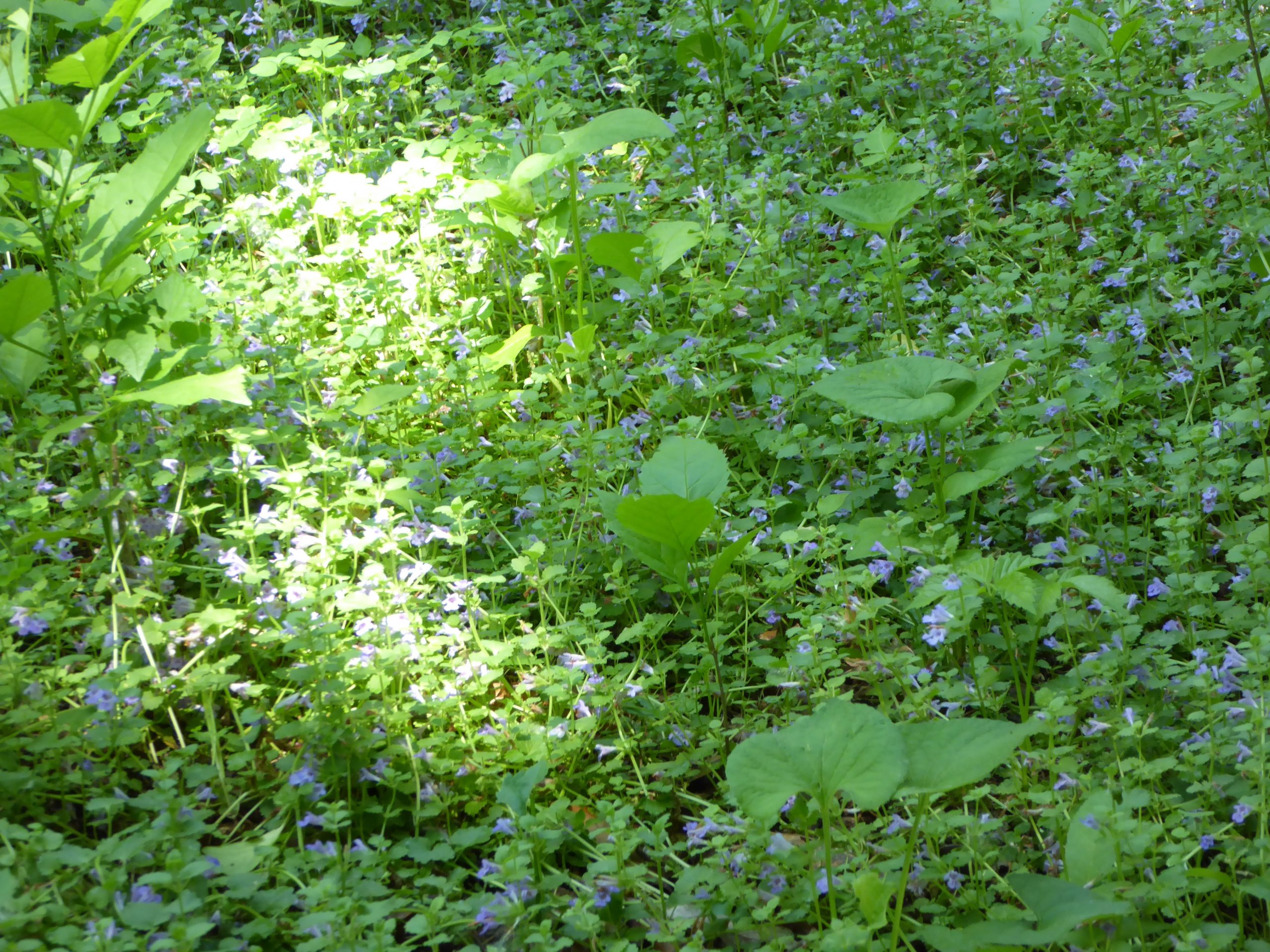Creeping Charlie, Glechoma hederacea
If you have not encountered this plant in your travels or heard a discussion about what to do with this aggressive non-native ground cover, you probably need to get out more. It seems to be everywhere. While it can be a daunting process, it is possible to weed it out. Of course this is easiest if the invasion is just getting started. A well-established population will have an accumulation of seed in the soil such that even if you were to douse the area with herbicide it will be right back, again and again, from viable seed.
It is a bit tricky to weed out the root without just breaking off the shoot. If your efforts are limited to breaking off the above ground parts you will have a never-ending task. Ideally, begin the weeding after a gentle, soaking rain. Use a hand fork to loosen soil and gently tug to pull as much of the root system as possible.

Any spot treatment with herbicide should be followed with replanting desired native diversity to quickly cover the ground left bare.
While this non-native flower does provide nectar and pollen for a variety of native insects, studies have found it requires seven times the number of flower visits to obtain the same nutritional value as provided by local native plants. Here are some suggested replacements (arranged from shortest to tallest): golden groundsel, hepatica, wild ginger, dwarf-crested iris, Virginia waterleaf, wild geranium, white woodland aster, big-leaved aster, heart-leaved aster, zig zag goldenrod, and columbine. While mature size of plants varies with how much light and water is available, you can maintain a groundcover appearance by monthly trimming what would be much taller plants. Following this prescription, white woodland aster will bloom at six inches tall, in fall, still providing food to pollinators.
Identification: creeping Charlie is a mint, so its stem is square, and is fragrant when crushed. While it generally stays close to the ground, it can climb up larger plants with a stout stem and eventually smother them by blocking most available sunlight. Generally prefers shade, but will persist in the sun if spreading from a well established shady area. Flower is a deep blue, deep tube, with leaves distinctively scalloped , and displaying prominent veins.
NOTE: can be toxic to horses when consumed in large quantities.
– Douglas Owens-Pike, Metro Blooms Sustainable Landcare Expert

